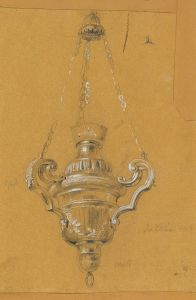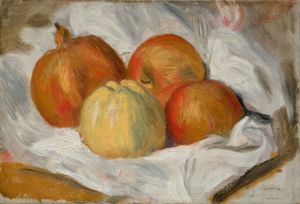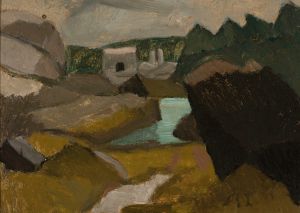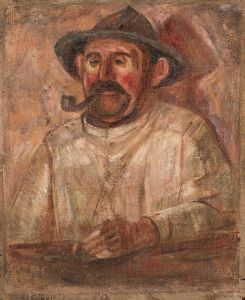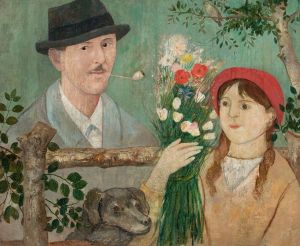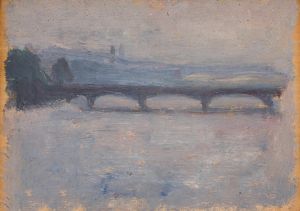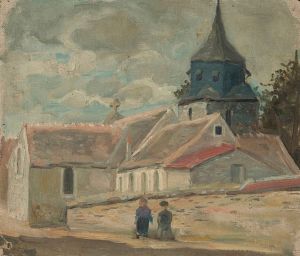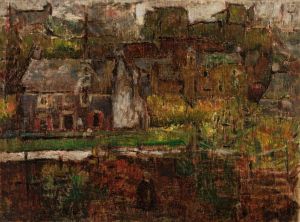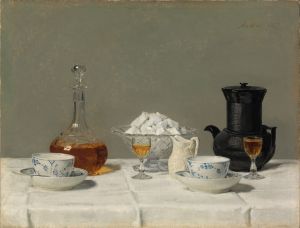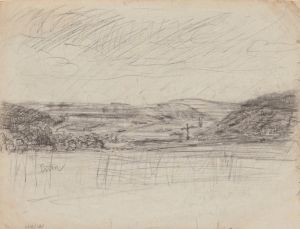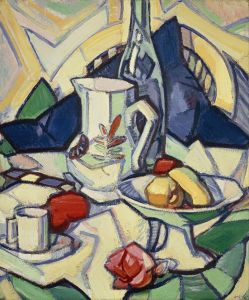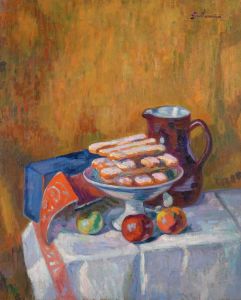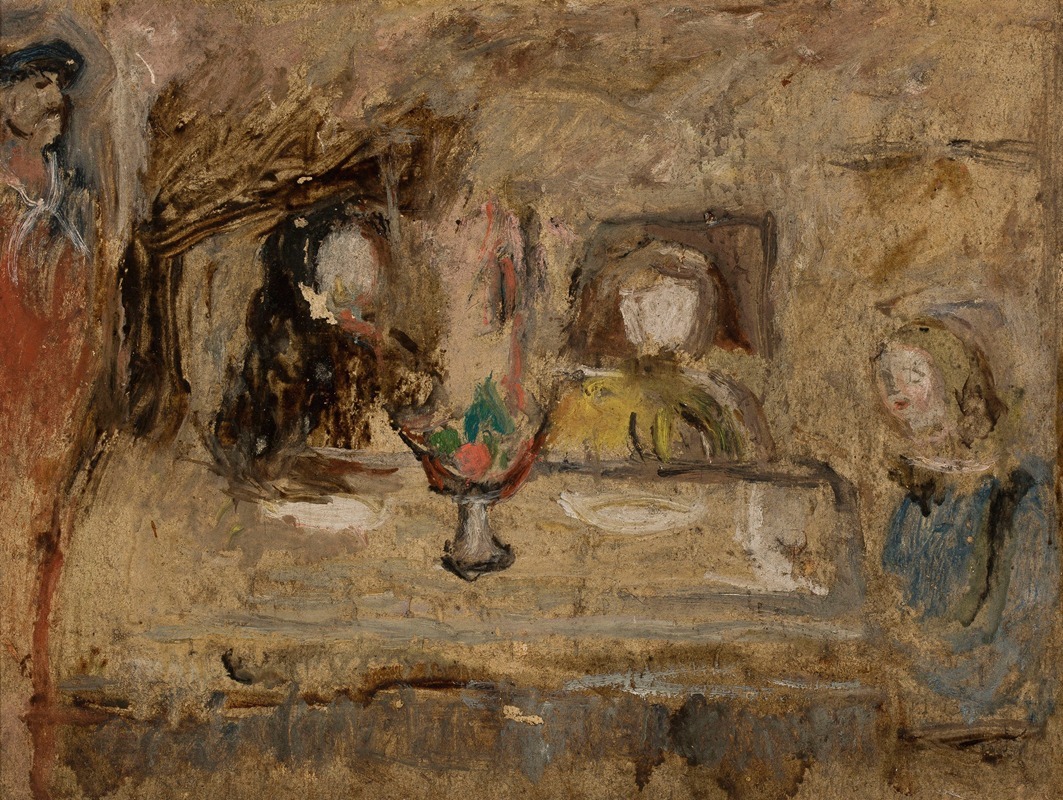
Przy stole
A hand-painted replica of Tadeusz Makowski’s masterpiece Przy stole, meticulously crafted by professional artists to capture the true essence of the original. Each piece is created with museum-quality canvas and rare mineral pigments, carefully painted by experienced artists with delicate brushstrokes and rich, layered colors to perfectly recreate the texture of the original artwork. Unlike machine-printed reproductions, this hand-painted version brings the painting to life, infused with the artist’s emotions and skill in every stroke. Whether for personal collection or home decoration, it instantly elevates the artistic atmosphere of any space.
Tadeusz Makowski was a Polish painter known for his unique style that combined elements of folk art, symbolism, and modernism. His work often depicted scenes of everyday life, characterized by a distinctive use of color and form. One of his notable paintings is "Przy stole" (translated as "At the Table"), which exemplifies his artistic approach and thematic interests.
"Przy stole" is a painting that reflects Makowski's fascination with the simplicity and innocence of childhood, a recurring theme in his oeuvre. The painting portrays a group of figures gathered around a table, engaged in what appears to be a communal activity. This setting is typical of Makowski's work, where the domestic sphere becomes a space for exploring human relationships and emotions.
Makowski's style is marked by a blend of geometric forms and a muted color palette, which can be seen in "Przy stole." The figures in the painting are rendered with a certain naivety, reminiscent of children's drawings, yet they convey a depth of feeling and interaction. This approach aligns with Makowski's broader artistic philosophy, which sought to capture the essence of human experience through a simplified, almost primitive aesthetic.
Born in 1882 in Oświęcim, Poland, Tadeusz Makowski studied at the Academy of Fine Arts in Kraków, where he was influenced by the Young Poland movement, which emphasized a break from academic art traditions and embraced more modern, expressive forms. After completing his studies, Makowski moved to Paris in 1908, where he became part of the vibrant artistic community that included figures like Pablo Picasso and Georges Braque. The influence of Cubism is evident in Makowski's work, including "Przy stole," through his use of geometric shapes and a fragmented approach to composition.
Despite the modernist influences, Makowski maintained a strong connection to Polish folk art, which is reflected in the simplicity and directness of his imagery. This fusion of styles is what makes his work distinctive and resonant, offering a unique perspective on the human condition.
"Przy stole" is not just a depiction of a mundane scene but an exploration of the bonds that connect people. The painting invites viewers to consider the interactions and relationships that define our lives, presented through the lens of Makowski's unique artistic vision. His ability to convey complex emotions through simple forms is a testament to his skill and insight as an artist.
Throughout his career, Makowski's work was well-received in both Poland and France, and he exhibited widely in both countries. His paintings continue to be celebrated for their emotional depth and innovative style, and "Przy stole" remains a significant example of his contribution to modern art.
Makowski passed away in 1932, but his legacy endures through his paintings, which continue to be studied and admired for their unique blend of modernist and folk elements. "Przy stole" is a testament to his ability to capture the essence of human experience in a way that is both timeless and deeply personal.





